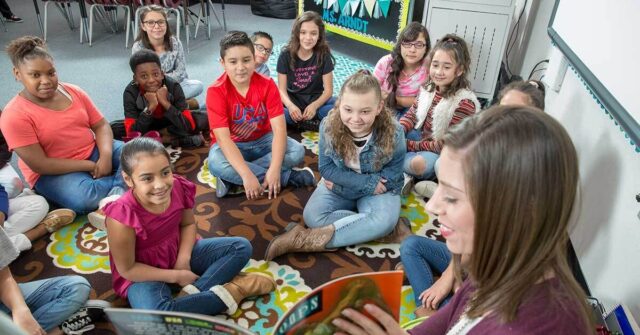
Check out the AoWs on Kelly's website here.
Build Background Knowledge Through the Article of the Week
When introducing the concept of the Article of The Week (AoW), I started with the why. Why would we be reading and discussing AoWs over the course of the school year? I began by giving students a political cartoon. I was careful to select a cartoon where they would know all the words but would have trouble comprehending because they lacked prior knowledge. I asked them why they did not understand the cartoon. Through class discussion, we established the idea that you have to know stuff to read stuff. Once they understood this notion, I shared a couple more examples (like the Wall Street Journal news articles referred to earlier in this chapter) until I was reasonably sure they grasped the importance of prior knowledge. I was honest with them: “There may be times when you will not like doing the AoWs. Remember: I do not select them to entertain you. I select them to inform you. And sometimes there may be a topic that doesn’t immediately grab your interest. Or you might not be in the mood to write your weekly reflection. But I promise you this: if you read and write responses to the AoWs, you will build a knowledge base that will make you a better reader and a better thinker for the rest of your lives. This is important, but it doesn’t come easy. It requires hard and sustained work.”
I distributed the AoW every Monday and collected their responses every Friday. For each week’s article, I asked students to first mark their confusion. I didn’t want them hiding their confusion; I wanted them to reveal it. Confusion is normal, the place where learning occurs, and marking it has three benefits:
- it helps students monitor exactly where their comprehension falters;
- it encourages them to reread closely—rereading being the principal strategy strong readers employ when faced with confusion; and
- it gives them a starting place to share their confusion with others in an attempt to wrestle with it. We didn’t run from confusion; we embraced it.
When students get an article that is hard for them to understand, they are forced to be metacognitive (this is a good thing). We should teach them to ask themselves two questions when confronted with confusion: Where, exactly, does my comprehension break down? What do I already know that may be helpful in understanding the hard parts? I want students to understand that because of their limited knowledge, they are going to run into a lot of things they do not fully grasp. When this happens, I do not want them to internalize this as a shameful thing (“I am stupid” or “I’m helpless”). This is not a failure on their behalf; instead, it just means they have to consciously work on strengthening their background knowledge. Ignorance is the problem, not intelligence.
The second thing I asked them to do was show evidence of thinking on the page. They could challenge ideas, ask questions, make predictions, form an interpretation, make connections, seek clarifications, make inferences—anything that showed they were thoughtfully interacting with the article. I wanted to see what they were thinking as they were reading the text. Much of this thinking cannot be done if students do not read closely. In fact, one clear sign of a shallow reading is when the reflection is about the headline topic, not about the specifics found inside the article.
The last requirement was to write a one-page reflection (not a summary) by hand, which they then attached to the article before turning it in. Students responded in any way they found meaningful, and for those who had trouble generating ideas, I offered the following possible questions:
- What are your thoughts about _____________? Explain.
- Did something in the article surprise you? Discuss.
- Pick a word, line, or passage from the article and respond to it.
- Is there something in this article that you’d like to talk back to?
- Discuss a move made by the writer in this piece that you think is good or interesting. Explain.
These prompts were intentionally open ended, and students were free (and encouraged) to ignore them if they had different reflections in mind. I wanted students to generate their own thinking. If I asked them narrower questions, then I’d be determining exactly what they would think (and what they would not think). I tried to avoid that. I wanted my students to embrace the blank page. This is not easy to do at the beginning of the year, as many students would rather the teacher just hand them some questions. Reading as a simple extraction exercise is a lot easier than sharing what you think, and asking students to fill a page with their thinking breaks them of the habit of relying on the teacher to determine what they should think.



